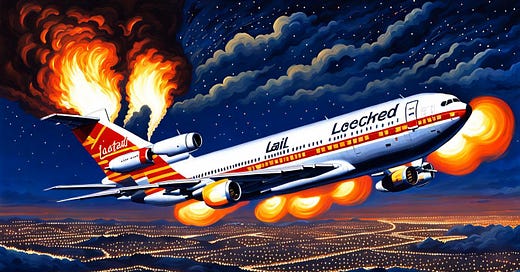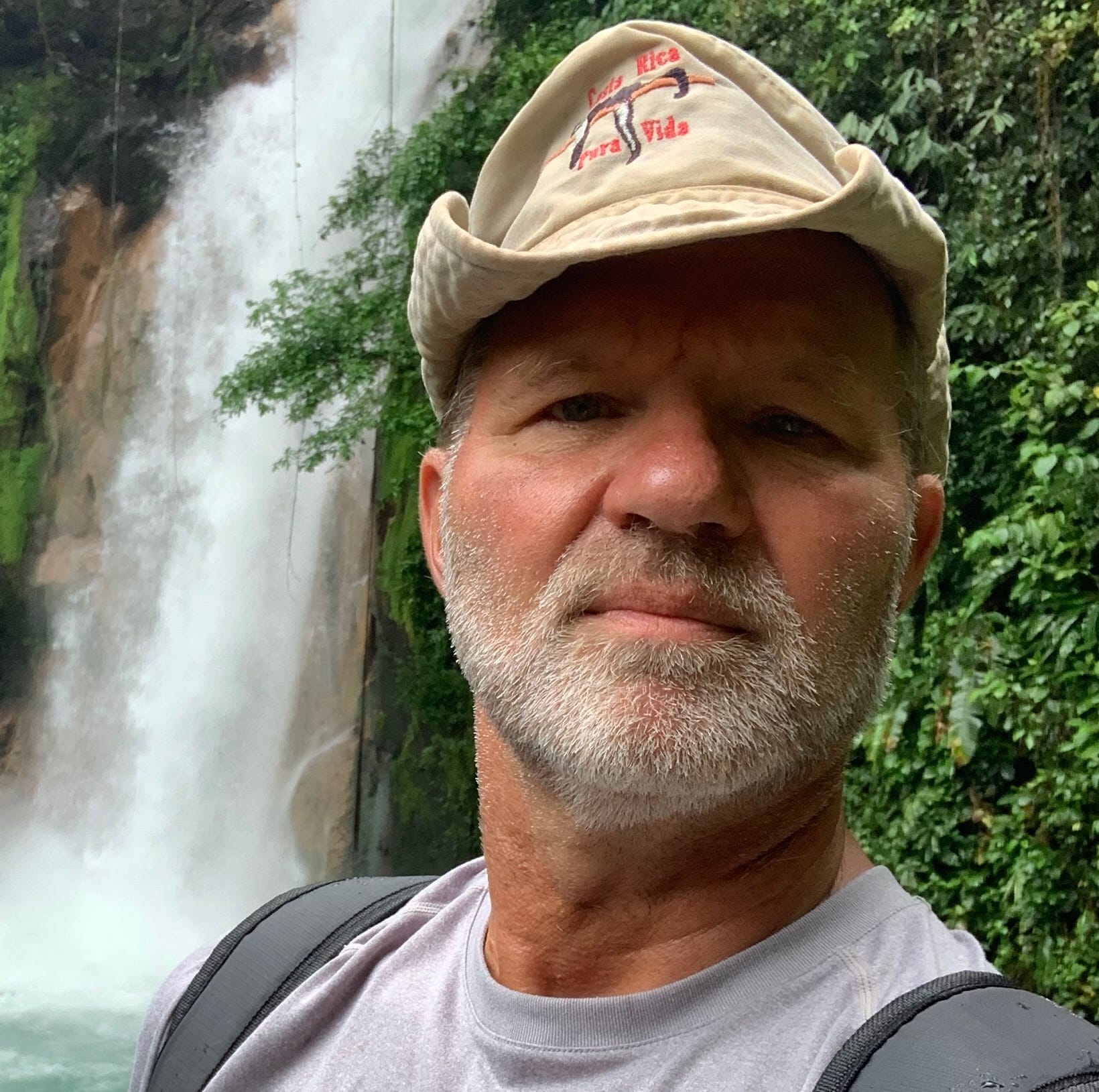Hi loyal reader!
I have a real-life horror story today, but first I am asking for your help to spread the word about Distant Perspective. It comes with FREEBIES, so read on.
If you enjoy Distant Perspective, it would mean the world to me if you invited friends to subscribe for FREE. If you refer friends, you will receive benefits that give you special access to Distant Perspective swag.
How to participate
1. Share Distant Perspective. When you use the referral link below, or the “Share” button on any post, you'll get credit for any new subscribers. Simply send the link to friends in a text, email, or share it on social media.
2. Earn benefits. When friends use your referral link to subscribe, you’ll receive special benefits.
You get to suggest a commentary topic for me to write about when you make 2 successful referrals.
Get a FREE copy of my eBook about going expat in the middle of Covid, titled “Plan A Never Happens” for 5 referrals. The book will cost you $6 on Amazon, so this is a great deal.
Get a 30 min Zoom Chat conversation with me for 15 referrals. We can spend the time talking about any subject I have written about, any subject you want me to write about, or you can pick my brain or chew me out. It’s your call.
To learn more, check out Substack’s FAQ.
I don’t charge for my commentary and stories, and I don’t accept advertising, which means I am not under anyone’s thumb. There is no big corporation skewing my opinions - just five decades of independent journalism at the highest levels of the profession. I write Distant Perspective solely because that career has been a front row seat to the making of history and has taught me how to read the tea leaves. Knowledge is Power, but pointless if it isn’t shared, and that’s my only goal.
Thank you for helping get the word out about Distant Perspective! Here’s today’s story.
-Gary
Red Eye Ride
“That can’t be right,” the woman behind the counter says. She has just finished typing what seems like several hundred keystrokes into the computer before her, and the machine’s response has painted a baffled look on her face. She clears the info and restarts the ritual from scratch. It will be a couple of minutes before she gives her fingers a rest, and I get an answer.
“How much would it cost to upgrade to First Class?” Is the question I have posed. The ticket she is madly typing away about is my return flight from Los Angeles to Washington, D.C. The red-eye flight is not heavily booked and the likelihood of getting into the front cabin is high. I have been working in L.A. for a week now and would really like to get home. The comfort of a First Class seat as I fly eastward through the night is particularly appealing. A few complimentary drinks in a cushy seat offer the promise of several hours of sleep before we land at dawn.
“Well, I don’t know what to make of this,” she says as the computer, once again, offers an answer she can’t believe.
“Why?” I ask. An upgrade shouldn’t be this perplexing. “What does it say?”
“The upgrade is only nine dollars,” she says in disbelief.
“I’ll take it,” I say without hesitation as I slide my credit card across the counter. Hell, I’ll drink that much free booze before we leave the gate, I think to myself. She relents, deciding not to challenge the computer system for a third time.
Strolling gleefully to the gate, I peer out the window to see the shiny Lockheed L-1011 airliner parked outside. I smile as I think to myself, There is so much power to this thing that they even had to put one of its three engines up in the tail.
I’m one of the first to board. As I settle into my third row window seat, the attendant brings my first glass of champagne. Yeah, this is what I’m talking about. A few minutes later, a fellow more or less the same age sits down in the seat next to me.
“Are you flying for work?” he asks me.
“Flying home from work, actually,” I say. “I have been in Los Angeles working a freelance gig as a cameraman for Entertainment Tonight.”
“Oh, cool,” he says. “I actually work for the airline. I’m a fight attendant dead-heading back to the East Coast. We usually have to sit in the back, but since the flight is pretty empty I get to sit up here tonight.”
“That’s probably why my upgrade only cost nine bucks,” I say. For the next 45 minutes, our conversation flows effortlessly as he tells me about the places he’s been, thanks to his job for the airline. I tell him about the places I’ve been, thanks to my life as a journalist. I’m busy telling him a story about spending a month in France, working on a documentary about wine, when the plane does a little shake. To me, it feels like a tiny pocket of turbulence that I barely notice. To him, it is a conversation stopper.
“That wasn’t right,” he says as a touch of color drains from his face. He barely gets the words out when one of the on-duty flight attendants walks down the aisle to us and whispers in his ear. He looks at me, sizing me up with what knowledge he has already gleaned about me, and says, “You’re cool about things, right?”
“Sure, what’s up?” I ask. By this point in my career I have cheated death at least three or four times already, so, yeah, I don’t rattle easily.
“They shut down the Number Three engine, the one in the tail,” he says quietly enough that no one around will hear. “The fuel pressure gauge is pegged all the way to the end of the red zone. They are afraid it might blow up.”
I know enough about airplanes to know that every passenger jet is designed to be able to fly with one engine shut down. This L-1011 is even able to fly with two of its three engines malfunctioning. What it cannot do, is fly without a tail. An explosion in the tail engine is what the airline industry euphemistically calls a “fatal event”.
“Ladies and gentlemen, this is your Captain speaking,” the calm voice says, slipping easily through the public address speakers. “We have had an issue with the Number Three engine on our aircraft and we have had to shut it down. I know this was supposed to be a nonstop flight to Washington, D.C. tonight, but we’re going to have to make a landing in Phoenix and change aircraft from there. We’ll still get you home tonight, but it’s going to put us a couple of hours late. I apologize for the inconvenience.”
His explanation is accurate, even if it skips a few rather frightening details. For the next hour or so, the flight attendants keep my seat partner updated, lest they need to press him into emergency service. Naturally, everything they tell him, he tells me.
What he is telling me is that they have indeed shut the Number Three engine down, but the fuel pressure gauge remains pegged in the red zone. What they don’t know is, in ascending order of scariness; whether the gauge is malfunctioning and everything is really just fine; whether the fuel line to Number Three is blocked or pinched off so that the fuel pump is struggling futilely to pump fuel; whether fuel is continuing to pump into the shut-off engine, and is simply evaporating out of the rear of the engine; or whether fuel is continuing to pump into the engine and could ignite by residual heat or a friction-induced spark, thereby blowing the entire tail off the aircraft, and sending us into a straight downward nosedive, auguring us into the Arizona desert at roughly 500-miles per hour.
The pleasant nature of our conversation, naturally, ends at this point, as does the drink service, just when I really needed one. The Captain, also, doesn’t say another word until we are beginning our approach to the Phoenix airport. Yes, we make it to Phoenix with the tail still attached to the rest of the plane.
As we land on the runway, I watch a kaleidoscope of flashing red lights whizz by the windows. As we pass each fire vehicle, it pulls out onto the runway, following us to the darkest, furthermost point on the Phoenix tarmac, as far way from the terminal as they can park us. We are surrounded by flashing red beacons as the remaining engines fall silent.
It is at this point in the flight that I suffer my most indignant moment. After enduring an hour in the air, knowing full well that my world could come to an abrupt and undignified ending at any moment, I was certain that they would at least let us slide down the emergency chutes.
NO!
The sad little pickup truck with the stairway welded to its rear end trundles up to the plane, nestling its top landing against the skin of the plane below the doorway, and we are forced to walk off to the waiting buses.
Daylight has broken for hours before we landed in Washington, D.C., and it takes three more days for my camera equipment, which had been checked as luggage, to show up at my door. All of which would have been perfectly fine, if I had gotten to finish my story with a triumphant slide down the emergency chute. Still, I guess, it’s better that this story ends with a whimper instead of the “bang” it could have.





